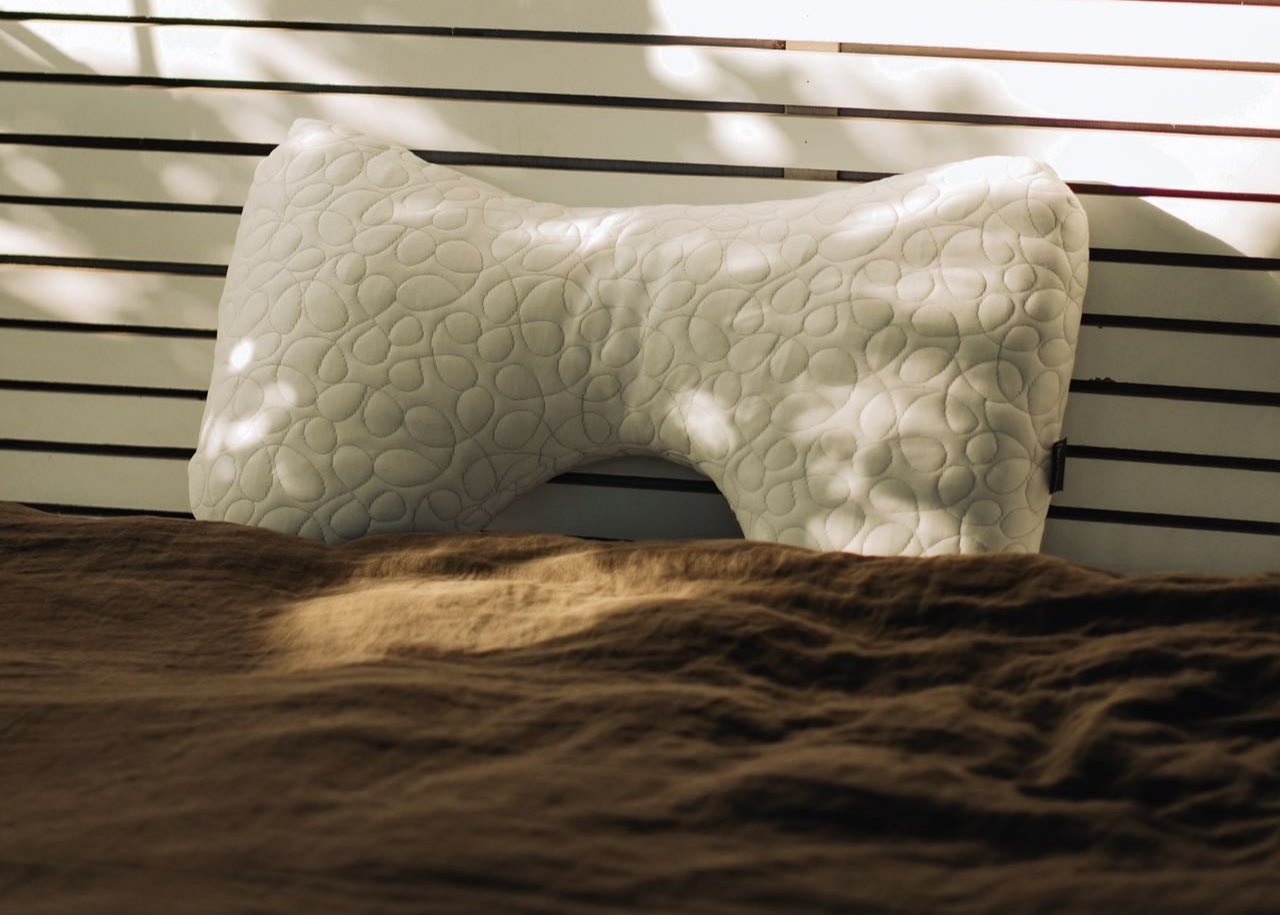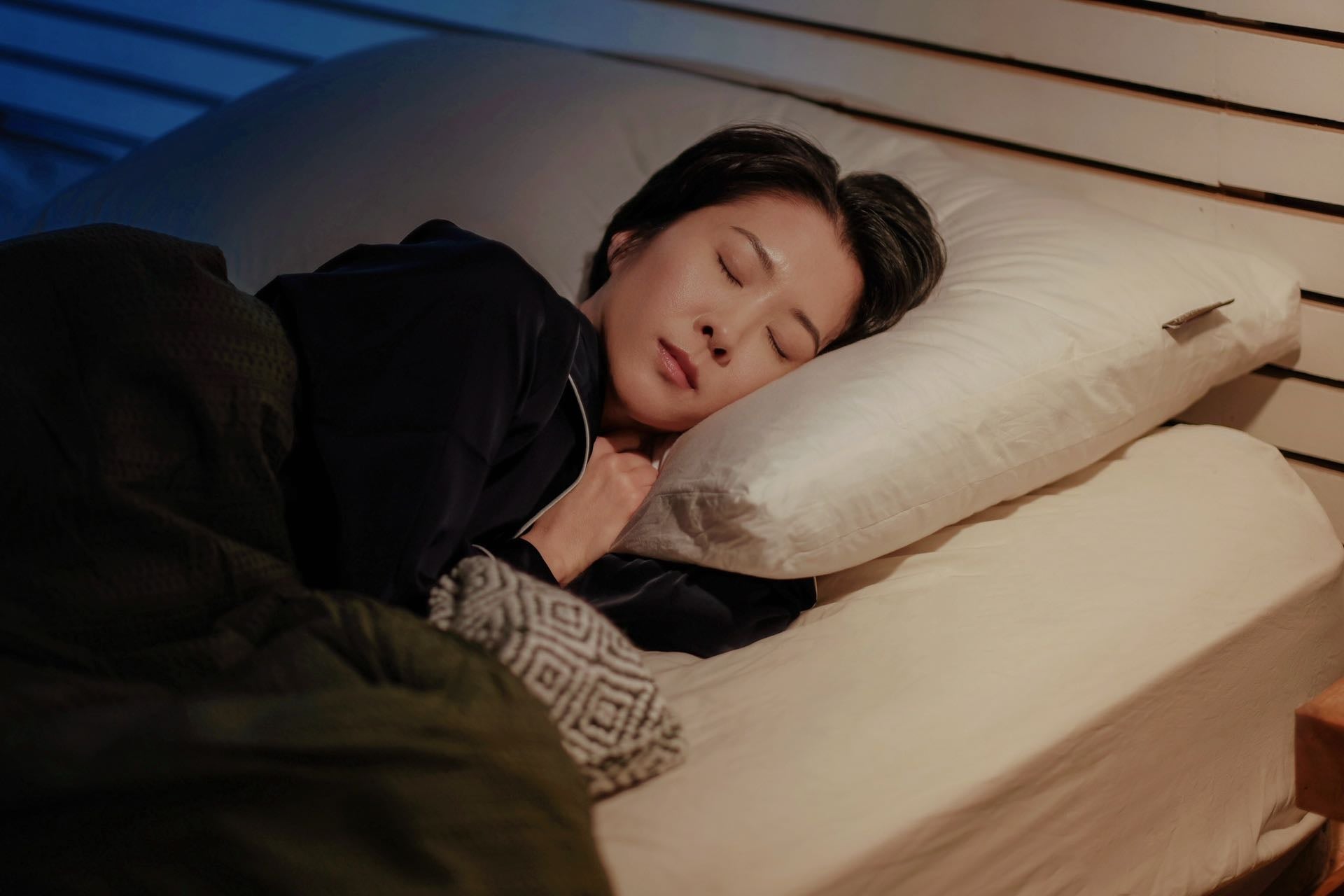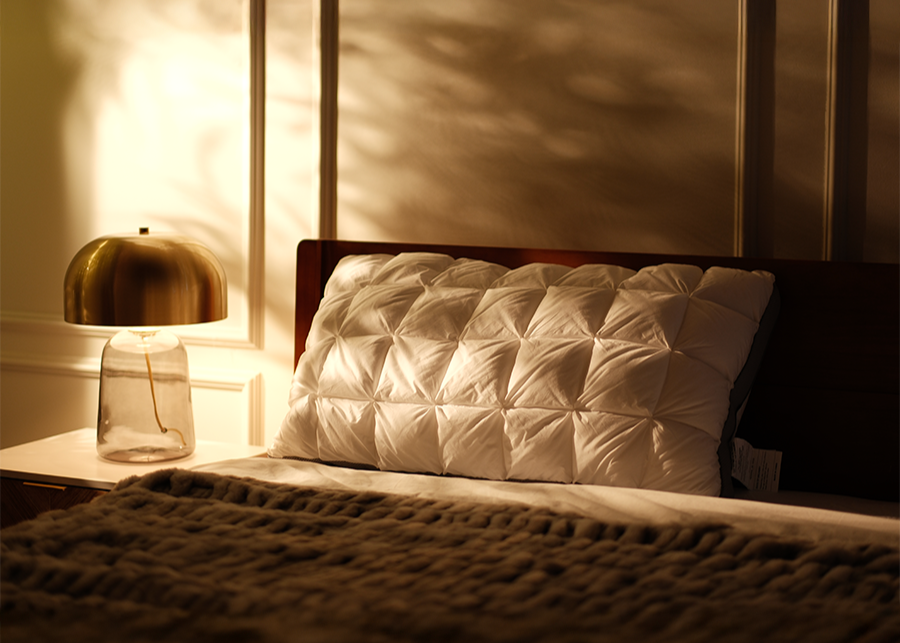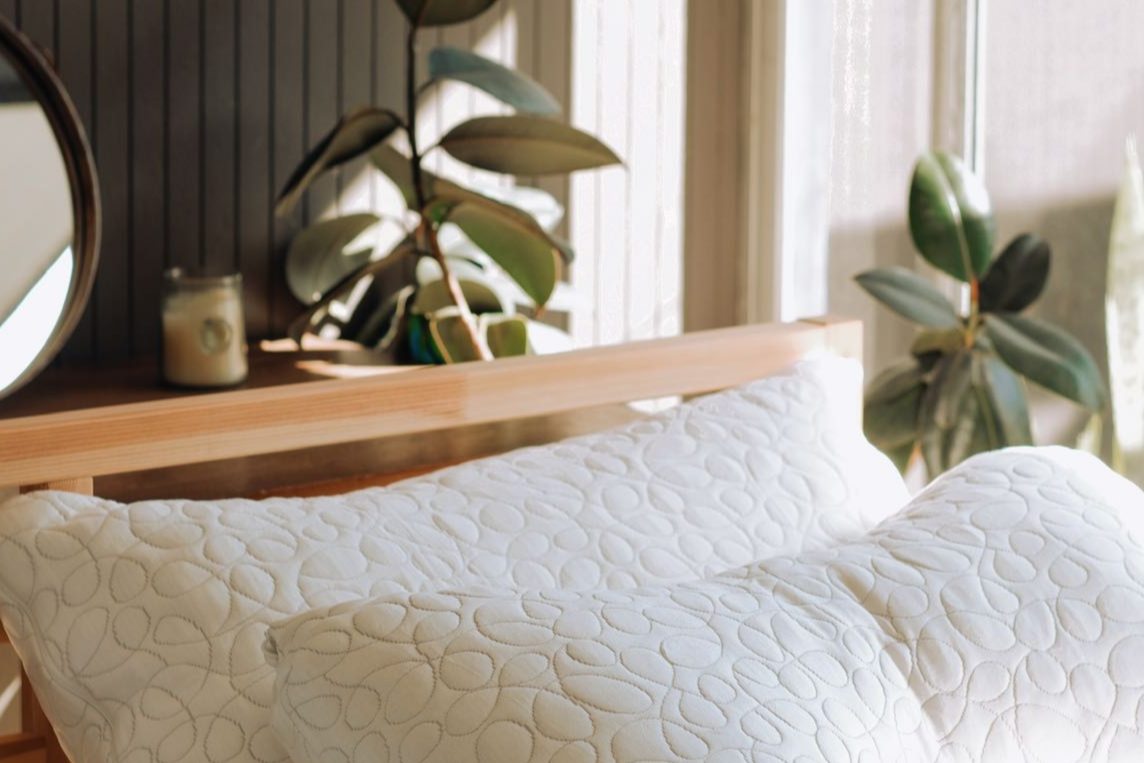Side, Back, or Stomach: Choosing the Right Pillow for Your Sleeping Position
Walk into any bedding store or browse pillows online, and you’ll see dozens of options boasting different fills, firmness levels, and designs. The key to narrowing down the perfect pillow for you? Consider your primary sleeping position. The way you sleep – whether on your side, back, stomach, or a combination – has a huge influence on what kind of pillow will provide the best support and comfort. In this guide, we’ll break down the unique needs of side sleepers, back sleepers, stomach sleepers, and those who switch positions, and give tips on what to look for in a pillow for each style. By the end, you’ll know exactly how to match your pillow to your sleeping position for a pain-free, restful night.
Why Sleeping Position Matters for Pillow Choice
Think about it: when you sleep, your pillow’s job is to fill the space between your head and the mattress, keeping your neck and spine in alignment. That space varies depending on your position:
-
A side sleeper has a significant gap from the outside of their shoulder to their ear that the pillow needs to bridge.
-
A back sleeper has a smaller gap from the back of the head to the upper back.
-
A stomach sleeper has almost no gap (in fact, using a pillow can easily over-elevate the head in this posture).
Using the wrong pillow for your position can lead to neck pain, shoulder tension, headaches, and general restless sleep. Imagine a side sleeper trying to snooze on an ultra-thin pillow – their head would flop sideways, straining the neck. Conversely, a stomach sleeper on a thick, firm pillow might have their head cranked back at an uncomfortable angle all night.
Statistics show that side sleeping is the most common position (anywhere from 50% to 60% of adults spend the majority of the night on their side). Back sleeping is the next most common (around 30-40%), and stomach sleeping is the least common (only 7-10% of sleepers). Each position has its pros and cons for health, but regardless of that, you want a pillow that optimally supports you in the pose you naturally gravitate toward. Let’s dive into each position and what pillow features work best for it.
The Best Pillow for Side Sleepers
If you sleep on your side, you’re in good company – this is the most popular sleep position. It’s also often recommended by health experts because it can promote good airway flow (helping with snoring or sleep apnea) and is comfortable for many people. However, side sleeping can lead to shoulder pressure and a bent neck if your pillow isn’t up to par.
What side sleepers need
A thicker, firmer pillow. Your pillow should be thick enough to fill the distance between your ear and the mattress, basically the width your shoulder creates. If the pillow is too thin, your head will tilt downwards; too thick, and it’ll be pushed up. Aim to keep your neck straight, in line with your spine. For most side sleepers, that means a pillow with a loft of around 4 to 6 inches, depending on your shoulder breadth and mattress firmness (on a very soft mattress you sink in more, so the pillow might need to be a bit thinner).
Loft and Firmness
Medium-high loft and medium-firm to firm support are usually ideal. You want the pillow to hold its shape under the weight of your head through the night rather than compressing completely. Materials like memory foam, latex, or buckwheat hulls are excellent because they are supportive. Memory foam (whether solid or shredded) will contour to your head and neck, supporting the curve of your neck while filling the shoulder gap. Latex is resilient and a bit bouncy, which can keep that support consistent. Buckwheat hull pillows are adjustable and very supportive (though they have a unique feel). If you prefer a traditional feel, a very full down or down-alternative pillow can work, but be prepared to fluff it and possibly fold it for enough height, as down tends to collapse.
Shape
Some side sleepers benefit from a contoured pillow or one with a cut-out for the shoulder. Ergonomic pillows designed for side sleeping often have a higher neck support area and lower head cradle, which can perfectly position your head and relieve pressure on the bottom shoulder. Even without a fancy shape, make sure your pillow is wide enough to accommodate your head and shoulder – a standard-size pillow works, but a larger queen or king pillow gives you a bit more room if you tend to move.
Other tips for side sleepers:
-
Consider using a body pillow or hugging a second pillow. This can keep your top shoulder more aligned and prevent you from twisting your torso (which can happen if your upper body leans forward).
-
Always use that pillow between your knees to keep your spine neutral from the lower back perspective.
-
If you often wake with shoulder pain, ensure that your mattress is soft enough to cushion your shoulder and that you’re not scrunching up (try to keep your bottom arm out in front of you, not tucked hard under your chest).
Side sleepers often have an easier time finding a comfy pillow because many pillows are made with this popular position in mind. Just remember: tall and supportive is the name of the game for side-sleeper pillows.
The Best Pillow for Back Sleepers
Back sleeping is generally considered a healthy posture for the spine (it distributes weight evenly and avoids the twists of side or stomach positions). The challenge for back sleepers is mainly to get enough support under the neck without propping the head up too much.
What back sleepers need
A medium loft, supportive pillow. When lying on your back, your face should be looking straight up at the ceiling, not angled toward your feet (pillow too high) or tilted back (pillow too flat). A good rule of thumb is that back sleepers often do well with a pillow in the 3 to 5 inch loft range, with a medium feel.
Neck Support
One of the best types of pillows for back sleepers is a cervical pillow or any pillow that has extra support for the neck. Many memory foam pillows come in a contour shape (a raised roll under the neck and a dip where the head lies). This design maintains the natural slight curve of your neck (cervical lordosis) while keeping your head from tilting too far back. Even without a special contour pillow, you can achieve this by using a rolled up towel or a small neck roll on top of a regular pillow, placed just under the crook of your neck. The main pillow then supports the back of your head.
Materials
Memory foam (shredded or solid), latex, or a well-stuffed down alternative pillow can all work for back sleepers. Memory foam and latex in particular excel at providing that combination of softness for your head and firmness under your neck. If you prefer down or polyfill, make sure the pillow is not too high – you might even choose a pillow labeled “for back sleepers” which could have an internal gusset or chamber design to give it a lower profile.
Avoid too much pillow
Back sleepers should be cautious of pillows that are overly lofty or using two pillows. If your chin is being pushed towards your chest by your pillow, it can cause neck strain and even contribute to snoring or breathing issues (because it compresses the airway). Often a single medium pillow (or a contoured one) is enough. If you feel you need more, it could be that your pillow is too soft and flattening out under you; in that case, get a firmer pillow rather than stacking pillows.
Other tips for back sleepers:
-
A small pillow or bolster under the knees can ease pressure on the lower back, making the overall posture more comfortable and keeping your lower spine neutral.
-
Ensure your mattress supports your lower back; if the mattress is too firm and your hips don’t sink in a little, you might experience a gap at your lower back. A pillow solely solves neck alignment, but mattress plays into back alignment.
Back sleepers often enjoy that “floating” feel of a good pillow that cradles the head. With the right pillow, you should feel like your head is supported, but your throat isn’t compressed and your face is level.
The Best Pillow for Stomach Sleepers
Stomach sleeping is generally the trickiest position to support because it’s considered the least neutral for your spine. It puts your neck in a rotated position and can strain the back. Many experts actually suggest training yourself out of stomach sleeping. But if you just can't sleep any other way, choosing the right pillow is absolutely vital to minimize harm.
What stomach sleepers need
A very low loft, soft pillow – or none at all. That might sound extreme, but the goal is to have as little head elevation as possible to keep your neck from arching backwards. Many stomach sleepers actually do best with no pillow under their head. Instead, some will hug a pillow or place a thin pillow under their chest or hips for slight support.
Pillow type
If you are using a pillow under your head, make it a thin, relatively squishy one. Down or down-alternative can work well here because they compress down a lot. There are pillows marketed specifically for stomach sleepers; these are often 2-3 inches thick and very soft, or made of a malleable material like a shredded foam that you can spread out. Memory foam traditional pillows are usually too thick for stomach sleepers unless specifically slim profile. One interesting option is a pillow that has cut-out edges (sometimes called a stomach sleeper pillow) so you can breathe easier and not have your head turned completely to the side – but these are specialized products.
Position hacks
As mentioned, instead of focusing on a pillow for under your head, consider using a pillow differently:
-
Try placing a thin pillow under your pelvis. This can help reduce the arch in your lower back that stomach sleeping causes, which might relieve pressure.
-
Some stomach sleepers put a pillow under one shoulder/arm and kind of half-hug the pillow, which makes their upper body slightly turned – essentially they’re halfway towards a side-sleeping position. This can lessen neck rotation. A body pillow can be useful in this transition: you might start sort of stomach-down but on a slight angle hugging a body pillow, which keeps your spine more aligned than pure flat on the stomach.
-
If using a head pillow, keep it as low as possible. You can even partially slide it under your chest so it’s not solely under your head.
Firmness
Soft is typically better for stomach folks. You don’t want a firm block resisting your head because that will crank your neck. A pillow you can squish and shape is ideal – down alternative or a very soft, shredded foam with much of the fill removed can do the trick.
Stomach sleepers have to be careful; even with the perfect pillow, this position can cause neck issues over time. But recognizing that, the thinner the pillow the safer for your spine.
The Best Pillow for Combination Sleepers
What if you don’t stay in one position? Many people fall asleep on their side and wake up on their back, or some rotation of all three positions through the night. If you’re a combination sleeper, you need a pillow that’s a real multitasker.
What combination sleepers need
A versatile, adjustable pillow that can accommodate different angles or a “middle-of-the-road” pillow that isn’t too extreme in any one direction. If you primarily flip between side and back, you can usually find a happy medium pillow that works okay for both (a medium loft, medium firmness). If your switching includes stomach, you might lean toward what works for side/back and then try not to spend too long on your stomach, or use a strategy like we mentioned with a body pillow to reduce time truly prone.
Adjustable Pillows
Perhaps the best investment for a combo sleeper is an adjustable fill pillow (one where you can remove or add filling). Why? Because you can fine-tune the loft to find that sweet spot that’s not too high for back sleeping but not too flat for side sleeping. For example, you could use a shredded memory foam or shredded latex pillow and take out enough fill so that when you’re on your back it doesn’t tilt your head forward, but it’s still lofty and supportive when you roll to your side. It’s a balancing act, but adjustable pillows make it easier. They also tend to be good at morphing as you move – the contents shift around to support you in different poses.
Shape and Size
A standard rectangular pillow works, but some combination sleepers like a larger pillow (king size) so there’s more surface area to work with as they roll around. The pillow essentially remains under you as you change positions. Another trick: use two different pillows with different characteristics and strategically place them. For instance, some people might keep a thicker pillow on one side of the bed and a thinner one on the other, turning to the appropriate one as they switch from side to back – though not everyone wants to juggle pillows at night. Usually one adjustable pillow is simpler.
Materials
Shredded foam, buckwheat hulls, or any material that moves with you is advantageous. Memory foam clusters or shredded foam will re-settle as you move, which can be nice. Buckwheat hulls will also move and hold you in place, though some combo sleepers find the hulls a bit restrictive when trying to change positions (they sort of “lock” shape until you actively redistribute them). Down can be okay for combo sleeping if it’s overfilled (so it’s not too flat on the side), but it may require fluffing once you move.
Combination sleepers should evaluate what position they are in most often. If it’s side 70% and back 30%, lean your pillow choice to side sleeping but with a bit of compromise. If it’s evenly split, go for a true medium option or adjustable.
Final Thoughts on Pillow Position Matching
Knowing your dominant sleep position is a huge step toward finding a pillow that will support you properly. Always remember the cardinal rule: keep your spine as neutral as possible. If you’re testing a pillow, get into your sleep position and have a friend or family member observe or take a picture from the side. Your head should be in line with your spine, not angled sharply up or down. That visual feedback can confirm if a pillow is the right height.
Also, listen to your body. If you consistently wake up with a certain ache (neck, shoulder, back), it might be a sign your pillow isn’t ideal for your position (or you’re sleeping in a suboptimal posture). Don’t hesitate to tweak or change pillows – sometimes even rotating between two (for example, a firm one for side sleeping part of the night and a softer one for when you roll to your back) can be a solution.

If you want one pillow that can adapt to any sleeping position, the DonaHona Adjustable Memory Foam Pillow – Lunar is a fantastic choice. This pillow was engineered with versatility in mind – it’s fully adjustable, allowing you to add or remove its shredded memory foam filling to achieve the perfect loft for side, back, or stomach sleeping. Its ergonomic, moon-shaped design offers excellent neck support for side sleepers (it’s particularly great if you suffer from shoulder or neck discomfort on your side) yet it can be flattened out enough to comfortably support back sleeping without pushing your head forward. The breathable bamboo-fiber cover also ensures you stay cool, no matter the position. With the Lunar pillow’s customization, you essentially get the best of all worlds: you can tailor it to your needs and shift positions through the night knowing your pillow will support you every way you turn. It's an ideal solution for combination sleepers or anyone unsure of finding that one perfect pillow for their style.










Leave a comment
This site is protected by hCaptcha and the hCaptcha Privacy Policy and Terms of Service apply.